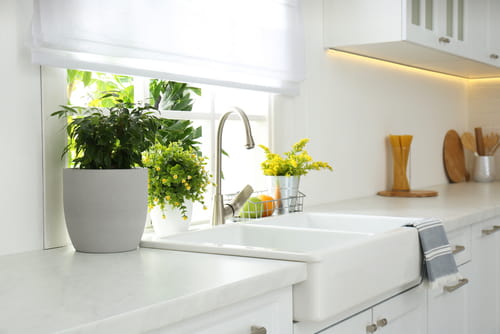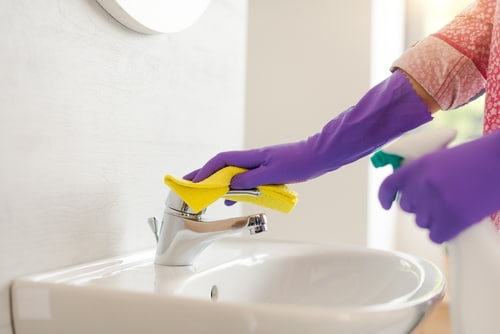Faucets are one of the most frequently used fixtures in a home, and they can quickly accumulate limescale, water stains, and even mold. Keeping them clean not only improves their appearance but also helps maintain their functionality. As experts in house cleaning in Mililani, we have effective methods for keeping your faucets in top shape. Keep reading to learn some handy tips!
What is the best way to remove limescale from a faucet?
Limescale buildup occurs due to minerals in hard water, leaving behind chalky, white deposits on your faucet. To remove limescale efficiently:
- Use White Vinegar: Soak a cloth or paper towel in white vinegar and wrap it around the affected areas. Let it sit for 30–60 minutes.
- Scrub Gently: After soaking, use a soft brush or a toothbrush to scrub away the limescale.
- Rinse and Dry: Rinse the faucet with warm water and dry it with a microfiber cloth to prevent new buildup.
- For Stubborn Deposits: Mix baking soda and vinegar into a paste, apply it to the limescale, and scrub after 15 minutes.
How do I clean a faucet without damaging the finish?
Faucets come in a variety of finishes, including chrome, stainless steel, brass, and matte black. Using the wrong method can lead to scratches or discoloration. Here’s how to care for your faucet safely:
- Avoid Abrasive Cleaners: Harsh chemicals, bleach, and scrubbing pads can strip the finish.
- Use Mild Soap and Water: A gentle solution of dish soap and warm water works well for daily cleaning.
- Microfiber Cloths Are Best: They effectively remove dirt without scratching the surface.
- Check Manufacturer Recommendations: Some specialty finishes require specific cleaning products.
How often should I clean my faucets?
The frequency depends on usage and water quality, but general guidelines include:
- Daily: Wipe down the faucet with a microfiber cloth to remove water spots and fingerprints.
- Weekly: Use mild soap and water to clean dirt and buildup.
- Monthly: Deep clean with vinegar or a non-abrasive cleaner to prevent limescale and bacteria buildup.
- As Needed: If you notice mold, mildew, or hard water stains, tackle them immediately to prevent worsening.
What is the easiest way to get rid of hard water stains on a faucet?
Hard water stains appear as cloudy or white spots on the faucet, usually caused by mineral deposits. The easiest way to remove them is:
- Vinegar Solution: Mix equal parts white vinegar and water, then apply it to the stains.
- Let It Sit: Allow the solution to sit for 10–15 minutes.
- Wipe Clean: Use a soft cloth to remove the residue.
- Polish with Olive Oil: A drop of olive oil on a microfiber cloth can add shine and protect the faucet from future stains.
How do I prevent mold and mildew on my faucet?
Mold and mildew thrive in moist environments, making faucets as well as bathroom and kitchen sinks susceptible. To prevent their growth:
- Keep Faucets Dry: After use, wipe down the faucet to eliminate excess moisture.
- Improve Ventilation: Proper airflow in bathrooms and kitchens reduces humidity.
- Use a Vinegar Spray: A weekly misting of diluted vinegar helps prevent mold growth.
- Deep Clean Regularly: Remove any black spots immediately using a mixture of hydrogen peroxide and water.
Should I hire cleaning services to take care of my faucets & the rest of my home in Mililani?
Regular cleaning, proper maintenance, and simple preventative measures can keep your faucets—and other areas of your home—sparkling. With our effective methods and reliable cleaning products, we’ll keep your Mililani home beautiful, healthy, and functional.
From handling dirty kitchen appliances to gently and properly caring for your light switches, there’s no corner we’ll leave unattended. Say goodbye to stubborn stains, limescale, and mildew, and enjoy a fresh, polished look every day, thanks to Maid In Oahu. Simply contact us online, book your appointment, and relax!



